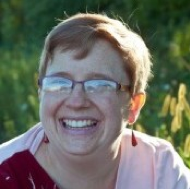We all know what a comfort zone is.
Sometimes we laud it. Sometimes we disparage it.
But most folks don’t know the alternatives, or imagine the only alternative is a “discomfort zone,” even though I have never heard anyone use that phrase.
A friend and dharma teacher recently reminded me that there are at least three options in traditional psychological teaching. Since Tibetan Buddhists love threes, as do a fair number of spiritual approaches and religions, I was pleased as punch to be reminded of this teaching.
It gives us a happy medium to return to—a true happy medium, as in “I wish you happiness and the root of happiness.” *
The root of happiness is not what Chogyam Trungpa called our cocoon—our comfort zone when we have lived there so long it smells of us and has no open windows. The root of happiness is not constant panic, anxiety or real threats to our life.
Happiness, real happiness, happens somewhere in-between, in a safe but challenging place.
I love this visual from Classroom Choreography because it is hand-drawn and shows the rough edges—this isn’t some simple set of concentric circles, but a messy, organic diagram for how life really interacts and overlaps.
The messy lines imply that things are always changing, which they are.
- Comfort Zone
We all know what this is, but in case it bears repeating: when we are too comfortable, things don’t get done.
I don’t just mean the dishes, though that can be an issue in our household, but big dreams and even making love somehow get off the activity list for the day. Anything that is slightly uncomfortable seems like it will rush right into panic—triggers, scariness, unknown.
Recently a student wrote in a piece that she finds herself more comfortable with “unknown” than “mystery”we— all have our preferences for what to call that over which we have no control.
Regardless, it scares us. And we are convinced the only way out of the comfort zone is, to use a common image, to leap off the cliff.
- Learning Zone (aka Risk or Challenge Zone)
My wife and I were recently considering investing in a high-risk opportunity.
My wife, Dylan, is a pretty low-risk person all around. One of the first things I recall her saying (direct quote) when we began dating was this:
“I’d rather be comfortable than be happy.”
The investment possibility, at likely a 9/10 for risk, got me excited. It got her terrified. Interestingly, when we considered a much more reasonable risk—pooling with other investors to lower our chance of loss—I didn’t care anymore, but then, she finally got excited.
We each have our own zones.
In learning, it is where we feel comfortable but also awake and challenged. In business or in life, it is where we definitely feel we are taking a chance, but we are not triggered. This is a tricky, and often thin, line for a lot of us.
This middle zone is often so thin that we forget it exists.
- Panic Zone (aka Danger Zone, which we all know about from the important lessons of Kenny Loggins)
Here, we cannot learn. Here, nothing can happen but the direct, palpable experience of disconnection and utter fear. Frontal lobe gets overridden by the amygdala (“lizard brain”) and any chances of change have disappeared.
On risk:
I know I often miss the middle space—a place of learning. I often assume that any discomfort at all is going to lead to panic, and I open the door wide open to sabotage my next actions through panic.
Meditation, yoga and other practices that help us slow let us notice that there is a thin line; constantly shifting and shimmering, but it does exist.
If we ask ourselves honestly, we can see that the times and places where we have learned are in that middle place: long after a traumatic incident, when we could finally digest, after something has forced us out of our comfort zone and we changed and got a chance to reflect.
The more we are able to slow, the more we are able to find the gap that is that space between panic and comfort.
When we find that gap, that opening, the space that Chogyam Trungpa called “Square One”, there we can experience the world as fresh and new, and know our possibilities.
It is not a static place.
There is no map, despite these diagrams. Only you know, at any given moment, where you are in your zones: in your career, in your sex life, with your yoga or meditation practices.
I directly feel in yoga my tendencies to check out, my disappearances when things get rough. Then I practice being as gentle as possible with the part of me that wants to run as soon as it sees any edge (see Maitri/Metta again*). Slowly, over time, the learning zone opens, flexes and widens.
Over time, I can take better care of myself and help others, as a teacher, find where they can learn and grow. So can you.
Exist in Risk.
*A stage of Maitri/Metta (Loving-Kindness practice).
Like elephant yoga on Facebook.
Ed: Catherine Monkman

 Share on bsky
Share on bsky






Read 0 comments and reply